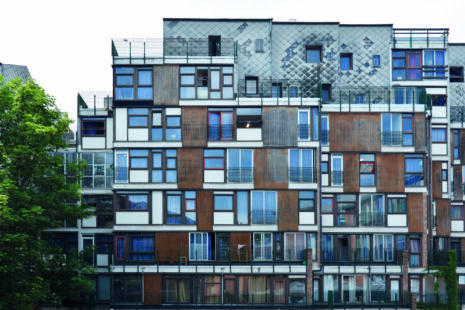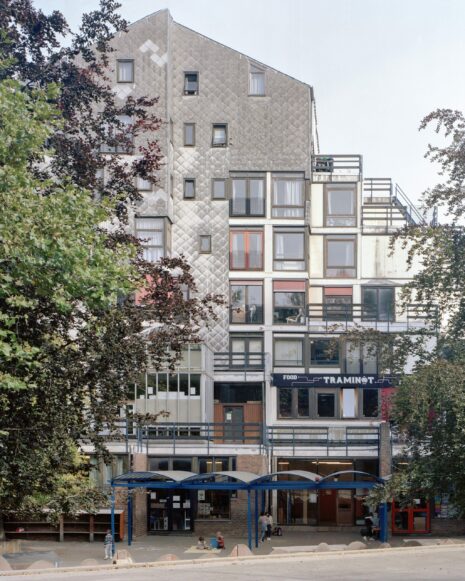Description
This building is part of larger 4-hectare project built on the UCLouvain campus in Woluwe-Saint-Lambert including gardens, a school, a university restaurant, an ecumenical building, and a metro station. Following May 1968, students asked to be given an active role in the design, and the Kroll studio consulted them. La Mémé – short for maison médicale, housing medical students – is organised in two layers. The first three levels comprise collective spaces such as community rooms or shops. On the upper floors, served by a central vertical circulation core, student housing is organised according to different typologies: single rooms in the so-called “fascist” part (a term coined by the architects themselves as they were forced by the university to design rather “conventional” student rooms), community apartments with six to eight rooms located in the main body of the building, and “attic” apartments on the last three levels. In addition to these types, there are also studios and flats for couples.
Apart from the “fascist”, all the rooms are different. To enable this variety, Kroll implemented a thick concrete slab without beams, which allows for random placement and easy relocation of the partition walls. A similar system was devised for the façades, where modular windows are interchangeable, giving the untidy appearance of self-construction. It contrasts with the regular structure and fully glazed façades of the “fascist” part. In terms of materials, the façades combine Eternit roofs, pine frames, bricks, and breeze blocks.
 Exterior view with glazed facade
Exterior view with glazed facade
 Rear view
Rear view
 Exterior view with university restaurant
Exterior view with university restaurant
Originally published in: Gérald Ledent, Alessandro Porotto, Brussels Housing. Atlas of Residential Building Types, Birkhäuser, 2023.